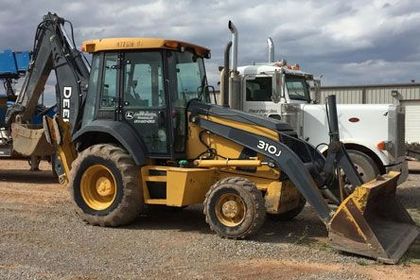A step-by-step guide to Superior Oilfield Rentals Texas and its key benefits
All Concerning Oil Field Equipment and Pipeline Equipment: Trick Insights and Necessary Information
Oil field equipment and pipeline systems play a crucial role in the oil and gas industry. They are crucial for the reliable removal and transportation of hydrocarbons. Secret parts, such as piercing rigs and tank, directly influence operational success. At the same time, developments in technology assurance to enhance safety and security and performance. Recognizing these elements is important for any individual associated with or thinking about this complex sector, as it sets the phase for deeper expedition of sector techniques.

Review of Oil Field Equipment
As the need for oil proceeds to expand, comprehending the tools used in oil fields ends up being significantly crucial. Oil field equipment incorporates a wide variety of machinery and devices important for exploration, extraction, and processing. Key components include drilling rigs, which are crucial for reaching oil tanks, and manufacturing tools, such as separators and pumps, that assist in the removal process. Superior Rentals Contact. In addition, tank play a substantial role in holding petroleum prior to transport. Security devices, including blowout preventers and stress assesses, ensures operational safety and security and effectiveness. Each piece of tools features cohesively to enhance production and preserve efficient process. Familiarity with this tools is very important for professionals in the sector to assure successful procedures and adherence to safety and security standards
Types of Drilling Rigs and Their Applications
Drilling rigs function as the foundation of oil removal procedures, with different types developed for particular geological conditions and functional demands. The most usual kinds consist of rotating boring rigs, which make use of a rotating drill bit to permeate the planet, and wire tool rigs, known for their percussion drilling technique. For offshore operations, jack-up rigs and semi-submersible rigs offer stability and support in marine settings. In addition, directional drilling rigs enable operators to drill at angles, getting to deposits that are not vertically available. Each rig kind has one-of-a-kind benefits, maximizing performance and safety based on the exploration setting. Picking the proper rig is vital for making the most of resource extraction while decreasing environmental influence and operational expenses.

Necessary Pipeline Equipment and Their Functions
Pipeline infrastructure is important for the transport of oil and gas from extraction websites to processing centers and end-users. Numerous crucial tools elements promote this procedure. Pipelines themselves act as the primary conduits, developed to withstand high stress and destructive substances. Pump terminals are important for maintaining circulation by enhancing pressure along the pipeline. Valves play a crucial function in controlling circulation and isolating sections for upkeep. Additionally, installations and ports assure protected joints in between pipe areas. Checking systems, including circulation meters and pressure sensors, are essential for identifying leaks and maximizing circulation prices. Lastly, pigging tools is employed for upkeep and cleansing, guarding pipeline integrity and effectiveness. Together, these parts develop the foundation of a reliable pipeline system.
Developments and Technologies in Oil and Gas Equipment

Safety And Security and Maintenance Practices in the Oil Sector
While the oil market has made significant strides in technology and effectiveness, the relevance of robust safety and security and maintenance practices can not be overstated. Efficient safety and security protocols are important to safeguard workers and the environment, reducing the threat of mishaps and spills. Routine inspections and upkeep of devices aid identify prospective concerns prior to they intensify, making sure functional honesty. Educating programs for employees are essential, stressing the importance of safety awareness and emergency situation response procedures. Additionally, adherence to industry policies and requirements cultivates a society of security. Carrying out innovative monitoring technologies can even more improve maintenance methods, permitting real-time assessments of devices conditions. Eventually, focusing on safety and security and upkeep is integral to the sustainability and success of the oil industry.
Frequently Asked Inquiries
What Are the Environmental Influences of Oil Field Equipment?
The ecological effects of oil field equipment include environment destruction, water contamination, and air contamination (Superior rentals squeeze tools). In addition, devices malfunction can bring about spills, detrimentally impacting wildlife and ecological communities, highlighting the need for strict policies and monitoring
Just How Is Oil Field Equipment Transferred to Remote Locations?
Moving oil field equipment to remote areas usually includes specialized vehicles, helicopters, or barges. Logistics business coordinate courses, making sure equipment shows up safely and efficiently, taking into consideration terrain and access to reduce delays and take full advantage of efficiency.
What Regulatory Requirements Govern Oil Field Equipment?
Regulatory criteria controling oil field equipment primarily include safety and security, environmental management, and operational effectiveness standards. Agencies such as OSHA and EPA implement these regulations to ensure secure techniques and lessen eco-friendly influence in oil removal operations.
What Skills Are Required to Run Oil Area Equipment?

How Do Oil Rates Impact Equipment Need and Usage?
Oil rates significantly affect devices need and usage. Greater costs typically lead to raised exploration and production activities, driving need for machinery. Conversely, reduced costs might lead to reduced procedures and lowered requirement for devices.